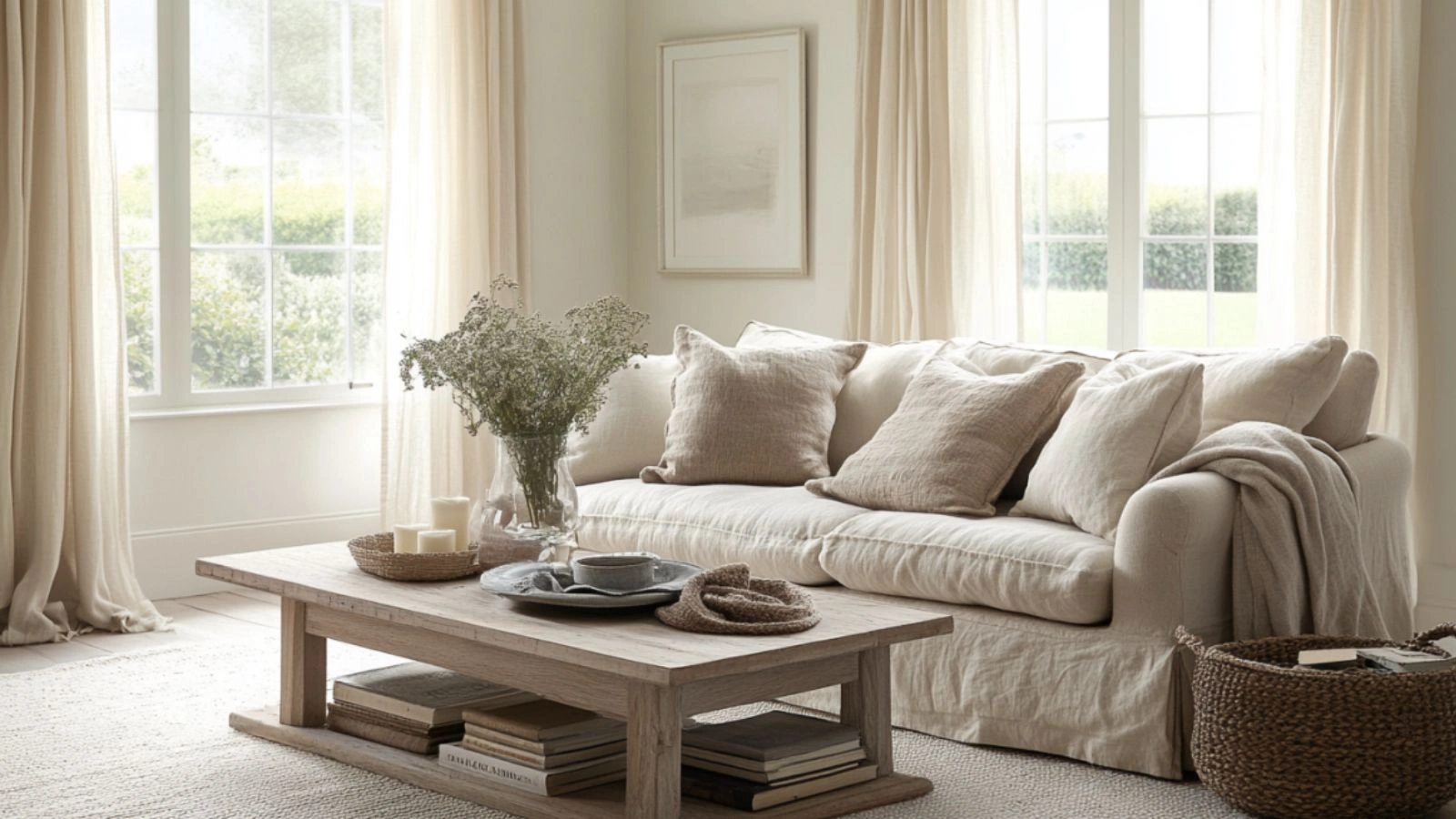Neutral Color Living Room Inspiration That Feels Light and Airy
Table of Contents
A well-designed living room should feel like a breath of fresh air—inviting, spacious, and effortlessly calm. That’s where neutral color palettes come in. Far from being dull or flat, neutrals are the secret to creating a space that feels light, airy, and beautifully balanced. In fact, interior designers often turn to neutral tones like ivory, soft beige, warm greige, and calming taupe as a foundation for timeless design.
Why do these hues work so well? Neutrals reflect natural light, visually open up a room, and provide a versatile canvas for layering in textures, furniture, and art. Whether your style leans minimal, modern farmhouse, or cozy Scandinavian, neutral color schemes adapt with ease.
This post offers a curated collection of neutral color room inspo that feels fresh and open. You’ll learn how to layer textures, choose the right tones, incorporate soft lighting, and balance function with beauty in your living room. From furniture arrangement tips to wall color suggestions, everything here is crafted to help you design a calming, cohesive space that breathes serenity into your home.
Start with a Soft, Natural Color Palette
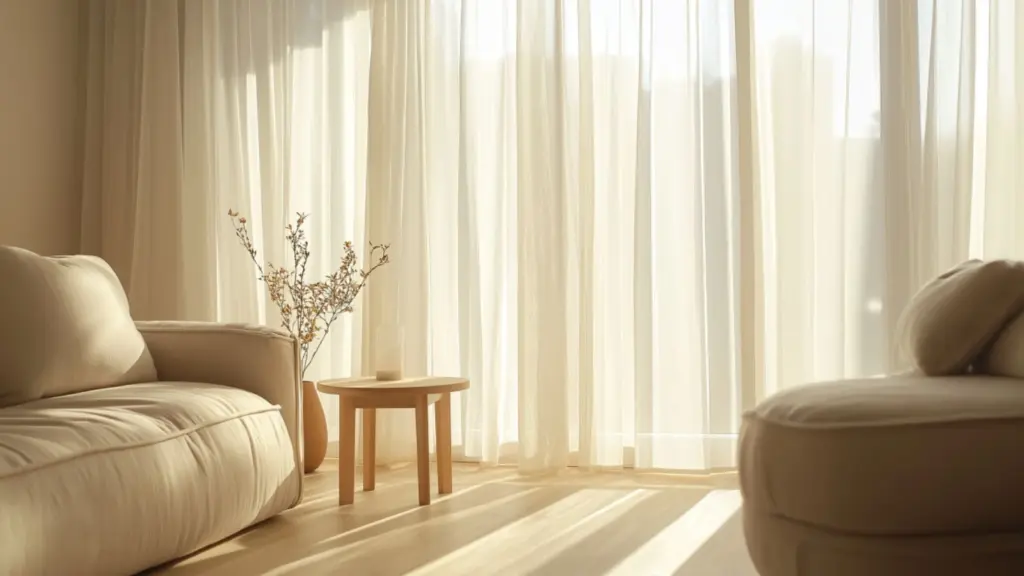
At the heart of any light and airy living room is a carefully chosen neutral color palette. Think beyond basic beige—today’s neutrals are layered, dimensional, and infused with subtle undertones.
Popular Neutral Tones to Consider:
| Color Shade | Undertone | Works Well With |
|---|---|---|
| Warm White | Cream or Almond | Natural woods, gold accents |
| Soft Taupe | Gray-Brown | Black accents, beige linens |
| Pale Greige | Gray + Beige | Green plants, light oak |
| Sandstone | Earthy Beige | Woven textures, matte brass |
Design Tip:
Avoid using just one shade throughout. Instead, vary your neutrals slightly—layer warm whites with soft taupes, or mix pale greige with sandy beiges. This subtle variation adds dimension while maintaining a serene look.
Layer in Natural Textures for Depth and Warmth
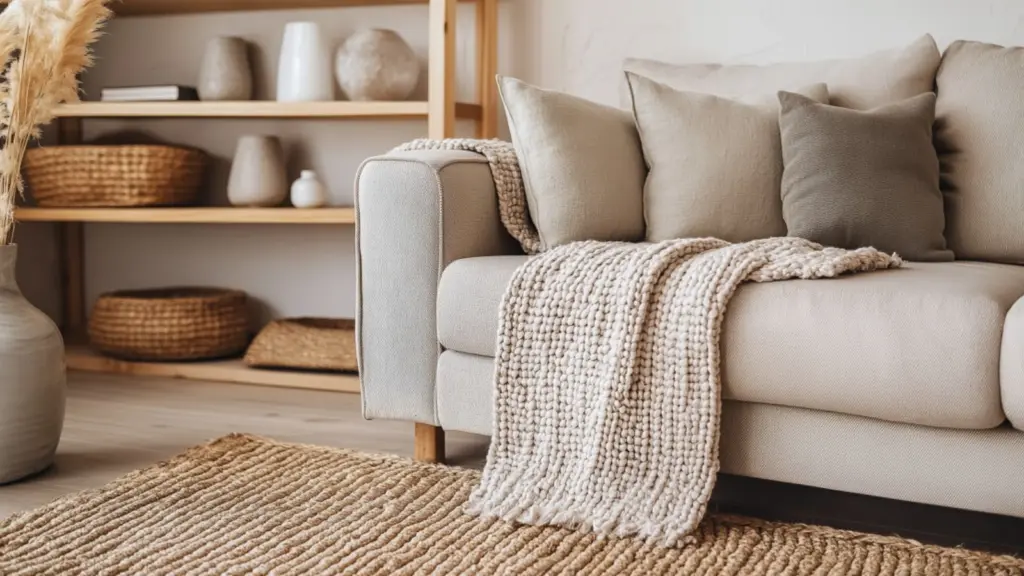
One of the easiest ways to keep a neutral room from feeling flat is through texture. Incorporating a variety of organic, tactile materials adds interest and makes the space feel welcoming.
Texture Pairing Ideas:
| Material Type | Use in Living Room | Mood Created |
|---|---|---|
| Linen | Sofa slipcovers, curtains | Casual and breathable |
| Jute or Sisal | Area rugs, baskets | Earthy and grounded |
| Oak or Ash Wood | Coffee tables, shelving | Light and timeless |
| Woven Rattan | Accent chairs, planters | Breezy and relaxed |
Practical Styling:
Use a neutral-toned jute rug as the base, add a linen-upholstered sofa, and layer in soft cotton throw blankets or velvet cushions in complementary tones. Even subtle details—like ceramic vases or stone trays—enhance the overall texture story.
Let in the Light with Sheer Window Treatments
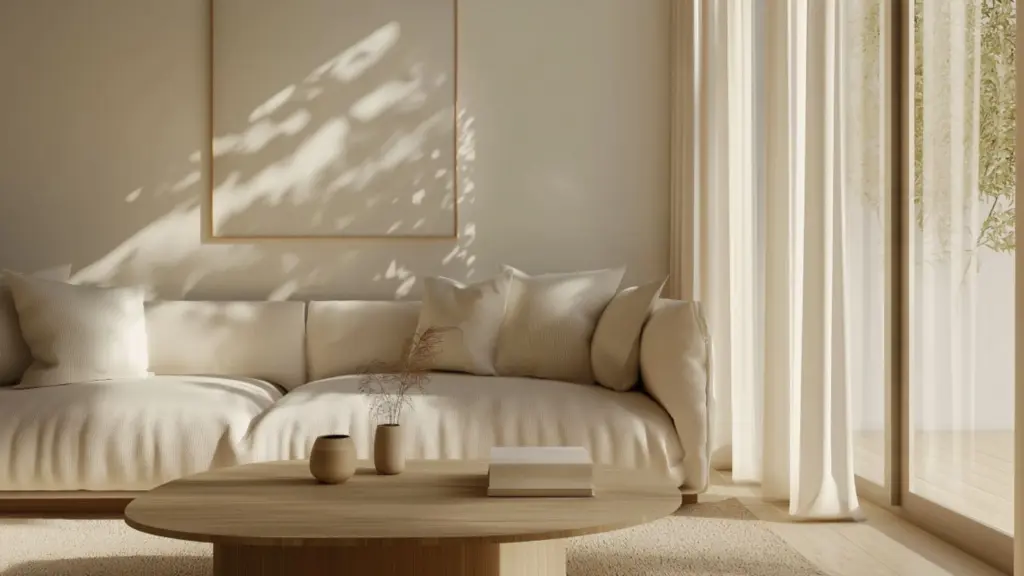
Maximizing natural light is key to achieving a bright and breezy feel. While blinds and blackout curtains serve their purpose, switching to sheer curtains or gauzy linen panels creates a much lighter effect.
Window Treatment Breakdown:
| Curtain Style | Best For | Visual Effect |
|---|---|---|
| Sheer White Panels | Daytime privacy | Soft and diffused lighting |
| Linen Drapes | Casual elegance | Natural movement and texture |
| Roman Shades | Clean minimal spaces | Simple and unobtrusive |
| Layered Curtains | Flexibility in light control | Functional and cozy |
Pro Styling Tip:
Mount curtain rods a few inches above the window frame and extend them beyond the width of the window. This creates the illusion of taller ceilings and a more expansive space.
Choose Neutral Furniture That Grounds the Room
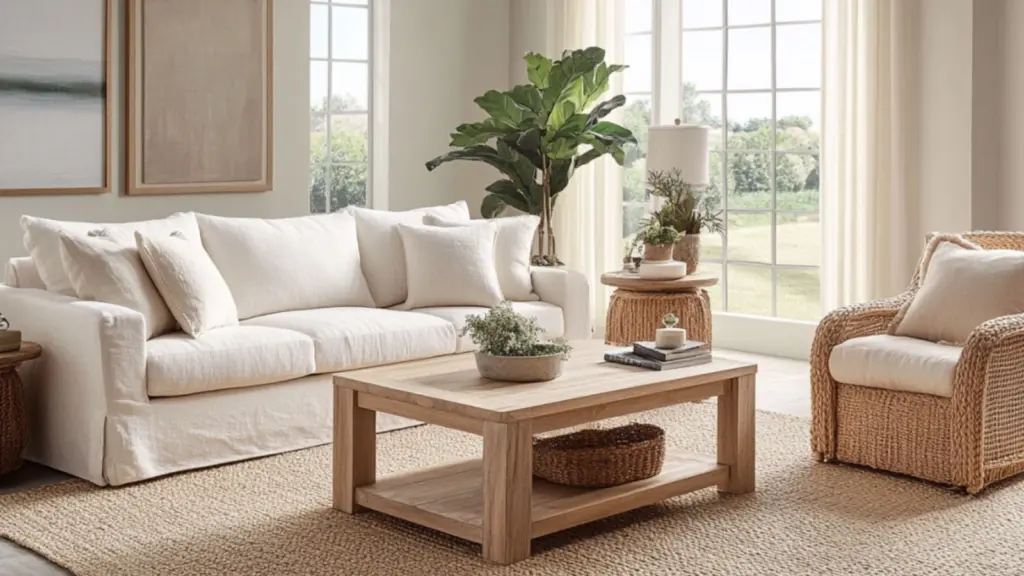
Your main furniture pieces set the tone for the entire space. In a light and airy neutral room, furniture should feel grounded yet unobtrusive. Opt for pieces with clean lines, light upholstery, and warm wood tones.
Living Room Furniture Ideas:
| Furniture Piece | Neutral Finish | Complementary Accent |
|---|---|---|
| Sofa | Ivory or greige linen | Soft pillows in sand or oat |
| Coffee Table | Natural wood or travertine | Matte black metal frame |
| Side Chairs | Cream boucle or rattan | Textured throws |
| Media Console | Whitewashed oak | Brass or black hardware |
Arrangement Tips:
- Float furniture away from walls to encourage flow and breathing room.
- Anchor with a large neutral area rug that defines the space without dominating it.
- Add a bench or ottoman in a matching fabric for functionality without clutter.
Why It Works:
These choices keep the visual weight of the room light, which is essential when working with neutral tones. Balance proportions and keep furniture open underneath (exposed legs, low backs) to emphasize airiness.
Use Art and Decor in Muted Tones for Subtle Interest

A neutral room doesn’t need bold color to be beautiful. Art, decor, and accessories in soft tones and natural materials can add richness while keeping the palette cohesive.
Muted Decor Styling Guide:
| Decor Type | Material or Finish | Placement Idea |
|---|---|---|
| Abstract Artwork | Beige, gray, blush tones | Above sofa or mantel |
| Vases | Matte ceramic or glass | Coffee table or open shelves |
| Books | Neutral covers | Stacked on console or bench |
| Pillows & Throws | Wool, cotton, or velvet | Sofas and chairs |
Style Tip:
Group items in odd numbers and vary their heights to create visual balance. Use muted metallics like brushed gold or antique bronze for a hint of elegance without overpowering the calm.
Incorporate Greenery for a Fresh, Organic Feel
Nothing complements a neutral color palette quite like the vibrant contrast of greenery. Plants add life, texture, and a subtle pop of color that still feels soothing and natural.
Best Houseplants for Neutral Living Rooms:
| Plant Type | Care Level | Placement Suggestions |
|---|---|---|
| Fiddle Leaf Fig | Medium to High | Corner or beside sofa |
| Snake Plant | Low | Floor planter or windowsill |
| Pothos | Very Low | Hanging or shelf display |
| Olive Tree | Medium | Tall pot by a window |
Decor Integration Tips:
- Choose neutral pots in stone, white ceramic, or woven baskets.
- Group smaller plants together on a tray or shelf for visual impact.
- For low-maintenance styling, mix in high-quality faux plants.
Why It Matters:
Greenery enhances air quality and adds movement and vibrancy without disrupting your calm color scheme. It’s the perfect way to tie organic elements into your room’s design.
Balance the Space with Symmetry and Negative Space
A neutral living room benefits greatly from visual balance. Symmetrical design elements—like matching chairs, paired lamps, or evenly spaced artwork—help maintain calm and order. But just as important is leaving space for the eye to rest.
Balance Breakdown:
| Design Element | Symmetry Application | Negative Space Application |
|---|---|---|
| Sofa + Chairs | Mirror image layout | Leave floor space around pieces |
| Artwork | Even spacing or pairs | Avoid cluttered gallery walls |
| Lighting | Matched lamps or sconces | Use natural light as focal |
| Decor Items | Pairs or threes | Don’t overcrowd shelves |
Styling Tip:
Let furniture “breathe” by leaving space between pieces. Avoid stacking surfaces with too many accessories—simplify with a few thoughtfully chosen objects.
Conclusion
Neutral color living rooms are anything but boring. When designed with intention, they feel light, airy, and deeply comforting. From selecting the right shade of soft white or greige to layering textures and embracing natural light, every element contributes to a peaceful, timeless space. Whether you prefer the elegance of minimalism or the coziness of layered design, neutral palettes allow your living room to shine quietly and beautifully. Use these ideas as inspiration to create a room that feels open, inviting, and enduringly chic.

